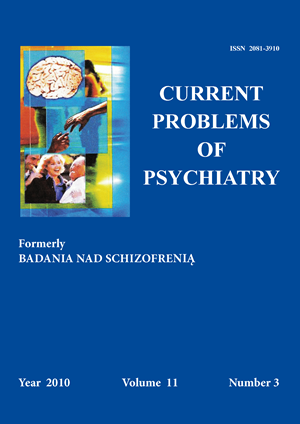Cyber-exploitation in Family Life
Keywords:
cyberbullying, violence, communication, new media, familyAbstract
Violence is a human activity and has always been present in mutual human relations. Or in other words, it is present in communication between humans. And as communication has always facilitated human civilization development, at the same time it gave people an opportunity to be aggressive and violent to one another and thus impeded the above mentioned human development. Violence, identified by many with aggression, is an imperfect form of communication, because it is not realized on the level of subjects that are equal to one another. The means (mediums) used by the sender and the recipient in the communication process are important. It also applies to violence in human relations. In the span human history the means have changed, staring with verbal, non verbal through physical to the latest information and communication technologies. Due to the mass character of these technologies, it can be referred to as virtual mass violence (online), described as cyberbullying. This presentation concentrates upon the subject of violence brought about the new media, that is the Internet and mobile telephones.
References
1. Formella Z. Cyberbullying: risks, prevention, educational challenges. W: Bis D., Rynio A. red., Media w wychowaniu chrześcijańskim. Lublin: 2010, p. 477.
2. Towards a safer use of the internet for children in the EU – a parents’ perspective. Conducted by The Gallup Organization, Hungary upon the request of Directorate General Information Society and Media, Flash EB Series #248. 2008. Eurobarometer research at the request of The European Commission since 1973. Methodology is the same every edition: in every member state of EU individual interviews are carried out (face-to-face) on a representative group of 1000 adults chosen at random. Report published on the website :
1. http://ec.europa.eu/information_society/activities/sip/eurobarometer/index_en.htm
2. According to Eurobarometr’s (EB) results on „Safer Internet” 75% children of 6 do 17 already use the Internet, and in Poland even more, because as many as 89%. Young internet
3. users are a bigger group than their parents (82%).Similarly with mobile phones: 63% of 10 year olds in UE have (in Poland75%), and 11% have a mobile phone with internet access (in Poland 18%).
4. O’Connell R. Typology of child cybersexploitation and online grooming practices. http://www.uclan.ac.uk/old/host/cru/docs/ cru010.pdf or www.fkbko.net
5. www.dzieckowsieci.pl
6. Wojtasik Ł. Pedophilia and pornography in the Internet – risk for children. Dziecko krzywdzone. Teoria, badania, praktyka. 2003; 5.
7. Research carried out by “Nobody’s Children” foundation, addresses – children aged 12 to 17. The research in online version, the questionnaire was available on selected www services for the period of FIDE months – Dec 2002 till April 2003. 8991children participated (1180 boys – 13%, and 7763 girls – 87%).
8. Jęczeń J. The Family and Safer Internet. W: Gorbaniuk J., Parysiewicz B. red., Rodzina wobec współczesnych wyzwań społeczno-kulturowych. Lublin; Wydawnictwo KUL: 2009, p. 66.
9. Finkelhor D., Mitchell K.J., Wolak J. Online Victimization: A Report on the Nation’s Youth. Washington; National Center for Missing and Exploited Children: 2000.
10. McLaughlin J.F. Characteristics of a Fictitious Child Victim: Turning a Sex Offender’s Dreams Into His Worst Nightmare. I. J. Comm. Law and Policy, 2004; 9: 95.
11. The research of S. Livingston and M. Bober in the span of the project UK Children Go Online April 2003 r. to April 2005 r., at the sample of 1511 people aged 9–19 lat and 906 parents of children aged 9–17. Quantitative measures used (computer assisted personal interviewing – CAPI) and qualitative methods (observations, interviews both individual and group). The methodology description and test result to be found on: www.children-go-online.net.
12. Lewandowska K. Threats In the Internet - Knowledge, and Experience of Children and Their Parents. Dziecko krzywdzone. Teoria, badania, praktyka, 2005; 13. http://www.dzieckokrzywdzone.pl/UserFiles/File/kwartalnik13/13_lwandowska.
13. Smith P.K., Mahdavi J., Carvalho M., Fisher S., Russel S., Tippet N. Cyberbullying: its nature and impact in secondary school pupils. J. Child. Psychol. Psychiatry, 2008; 49(4): 376-385.
14. Olweus D. Bullying; What We Know and What We Can Do. Oxford; Blackwell Publishers: 1993, p. 9.
15. Pospiszyl I. Przemoc w rodzinie. Warszawa; 1994, p. 14.
16. Walc W. Przemoc w relacjach międzyludzkich – opinie młodzieży. Rzeszów; 2006, p. 13-16.
17. http://gospodarka.gazeta.pl/gospodarka/1,58480,3901940.html
18. Kowalski R.M., Limber S.P., Agaston P.W. Cyber Bullying. Bullying in the Digital Age. Blackwell Publishing, Oxford 2008, p. 46-51.
19. A. Lenhart, Cyberbullying and Online Teens, Washington D.C., Pew Internet and American Life Project 2007.
20. J. Jęczeń, Mass media – new oicture of social work [Massenmedien – ein neues Gebiet der Sozialarbeit], in: M. Stepulak, J. Gorbaniuk (ed.) Wybrane aspekty pracy socjalnej w warsztacie pracownika socjalnego – doświadczenia polsko-niemieckie. Ausgewahlte Aspekte in der sozialen Arbeit des Sozialmitarbeiters – deusch-polnische Erfahrungen, Lublin-Eichstätt-Inglolstadt 2010, p. 90.
21. http://www.beatbullying.org/dox/media-centre/press-releases/press-release-040809.html


